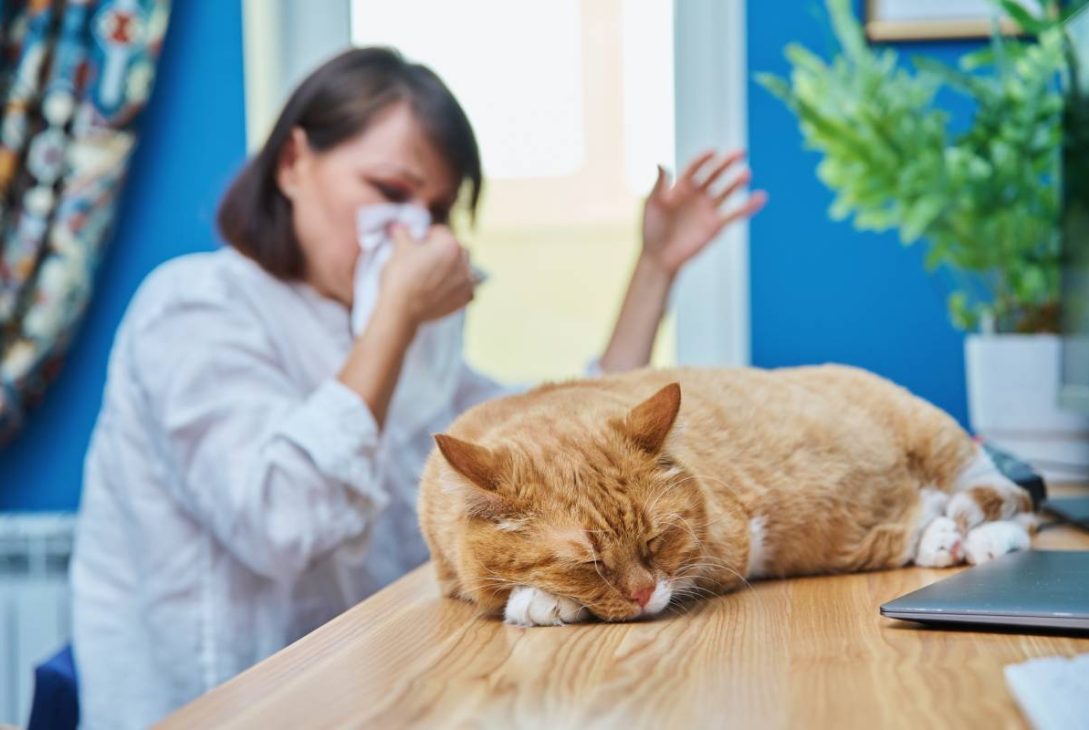Owning a cat can be a dream for many animal lovers, but cat allergies often pose a significant obstacle. While it might seem counterintuitive to consider pet ownership when you’re allergic, it is possible to have a cat and manage your allergies effectively.
This article explores practical tips, medical options, and lifestyle adjustments to help you coexist with a feline friend despite allergies.
Understanding Cat Allergies
Cat allergies are primarily caused by proteins found in cat dander (dead skin cells), saliva, and urine. When a cat grooms itself, these proteins are spread to its fur, which then becomes airborne or attaches to surfaces. For people with sensitivities, exposure to these allergens can lead to sneezing, itchy eyes, wheezing, and even asthma attacks.
The severity of allergic reactions varies from person to person. Some may experience mild discomfort, while others might have severe symptoms. Before bringing a cat into your home, it’s crucial to understand your level of sensitivity and consult with an allergist for advice.
Choosing the Right Cat
If you have allergies but still want a cat, choosing the right breed can make a big difference. While no cat is truly hypoallergenic, some breeds produce fewer allergens than others. Here are a few to consider:
- Siberian Cats: Known for lower levels of the Fel d 1 protein, which is a major allergen.
- Balinese Cats: Sometimes called the “long-haired Siamese,” they produce less Fel d 1.
- Bengal Cats: Their fine coat requires less grooming, which may result in fewer allergens.
- Oriental Shorthairs: Their short, fine coat is easier to maintain and may shed less and also easy to avoid flea problem.
Spend time with the breed you’re considering to gauge your reaction before committing.
Preparing Your Home
To minimize allergen exposure, it’s essential to create an allergy-friendly environment. Here are steps to prepare your home for a cat:
- Designate Cat-Free Zones: Keep certain areas, like your bedroom, completely off-limits to your cat. This provides a sanctuary where you can breathe easier.
- Invest in Air Purifiers: High-efficiency particulate air (HEPA) filters can significantly reduce airborne allergens. Place them in key areas of your home.
- Opt for Hard Floors: Carpets can trap allergens, so consider hardwood, tile, or laminate flooring instead. If removing carpets isn’t an option, vacuum frequently with a HEPA-equipped vacuum cleaner.
- Use Washable Fabrics: Choose furniture with washable covers and clean them regularly. Launder your bedding, curtains, and cushions to remove allergens.
- Control Humidity: Keep your home’s humidity levels low to prevent allergens from becoming airborne. A dehumidifier can help with this.
Grooming and Cat Care
Proper grooming and care can reduce the amount of allergens your cat spreads.
- Regular Baths: Bathing your cat weekly can help lower allergen levels. Use a gentle, pet-safe shampoo and consult a vet for advice if your cat has sensitive skin.
- Frequent Brushing: Brush your cat’s fur regularly to remove loose hair and dander. Use a grooming tool designed to trap allergens.
- Healthy Diet: A nutritious diet promotes healthy skin and reduces shedding. Consult your vet to ensure your cat’s diet is balanced and appropriate.
- Litter Box Management: Cat urine contains allergens, so keep the litter box clean and place it in a well-ventilated area.
Managing Personal Allergies
Living with a cat requires managing your allergies proactively. Here are some strategies:
1. Medical Options
- Antihistamines: Over-the-counter or prescription antihistamines can reduce symptoms like sneezing and itching.
- Nasal Sprays: Steroid or antihistamine nasal sprays can alleviate nasal congestion and inflammation.
- Allergy Shots (Immunotherapy): Gradual exposure to allergens through injections can help build tolerance over time. This requires a long-term commitment but may offer significant relief.
- Consult an Allergist: Regular check-ups can ensure your treatment plan is effective and adjust it as needed.
2. Personal Hygiene
- Wash Hands Frequently: Always wash your hands after touching your cat to prevent allergens from spreading to your face or eyes.
- Change Clothes: If you’ve been cuddling your cat, change clothes to avoid carrying allergens around the house.
- Shower Before Bed: Rinse off allergens to ensure a restful night’s sleep.
3. Limit Contact
- Avoid touching your face after petting your cat.
- Use gloves when cleaning the litter box or grooming your cat.
- Encourage your cat to use its bed instead of your furniture.
Building a Routine
Consistency is key when managing allergies. Develop a routine that includes regular cleaning, grooming, and medical management. The more systematic you are, the easier it will be to coexist with your cat.
When to Reconsider
Despite your best efforts, there’s a chance that your allergies may remain unmanageable. Severe reactions can negatively impact your health and quality of life. In such cases, you may need to explore alternative ways to interact with cats, such as volunteering at shelters or fostering short-term.
Conclusion
Having cat allergies doesn’t necessarily mean you can’t have a cat. With careful planning, lifestyle adjustments, and medical support, it’s possible to enjoy the companionship of a feline friend.
Remember, the journey requires patience and commitment, but the reward of a loving pet can be well worth the effort.









